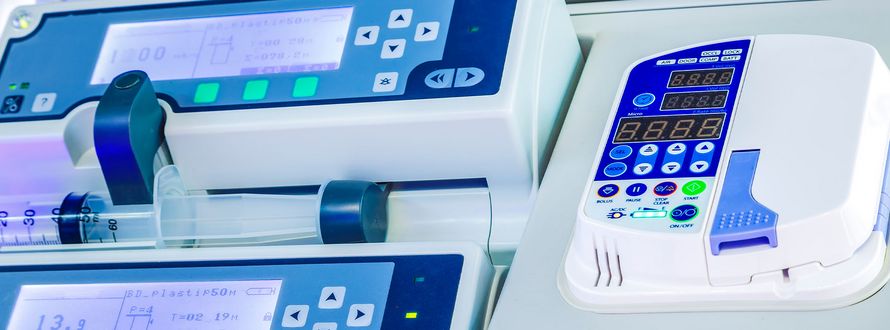The Challenge
In the wide area of medical technology, the challenge lies in developing portable devices and home ventilators that are not only scalable across various types of devices but also possess mixed criticality capabilities. Ensuring patient safety, data security, and device reliability are from greatst importance in these applications.
About Hospital Portables
Hospital portables are medical devices designed to provide essential healthcare services in a portable and convenient manner. They are designed for use within the hospital / medical institutes premises and are intended to enhance patient care, streamline workflows, and improve medical professionals' efficiency. Hospital portables can encompass a wide range of functions and applications, including:
- Patient Monitoring: Hospital portables can be equipped with monitoring capabilities to track vital signs such as heart rate, blood pressure, oxygen saturation, and temperature. These devices allow healthcare providers to closely monitor patients' conditions and make informed treatment decisions.
- Point-of-Care Testing: Some hospital portables are equipped with diagnostic tools that allow for quick and accurate point-of-care testing. This can include blood tests, urine analysis, and other diagnostic procedures, enabling rapid diagnosis and treatment adjustments.
- Mobile Imaging: Portable imaging devices, such as portable X-ray machines and ultrasound systems, enable healthcare providers to perform imaging procedures directly at the patient's bedside. This reduces the need for patient transportation and accelerates the diagnostic process.
- Telemedicine: Hospital portables can support telemedicine initiatives by facilitating remote consultations and video conferencing between patients and healthcare professionals. This is especially valuable for patients who cannot physically visit the hospital.
- Medication Administration: Some hospital portables are designed to assist in medication administration, allowing nurses to dispense and administer medications accurately and safely at the patient's bedside.
- Documentation and Charting: Portables equipped with Electronic Health Record (EHR) access and documentation tools enable healthcare providers to update patient information and record treatment details in real time.
About Home Ventilators
Home ventilators are medical devices designed to support individuals with respiratory conditions or breathing difficulties in their own homes. They deliver a controlled flow of air or oxygen to the patient's lungs, helping them breathe more easily and effectively. Home ventilators play a critical role in improving the quality of life for patients who require respiratory support:
- Respiratory Support: Home ventilators assist patients who have chronic respiratory conditions, such as Chronic Obstructive Pulmonary Disease (COPD), neuromuscular disorders, or respiratory failure. These devices help maintain appropriate oxygen levels and remove carbon dioxide from the body.
- Patient Mobility: By providing respiratory support at home, patients have the freedom to move around and engage in daily activities while receiving the necessary medical care.
- Reduced Hospitalizations: Home ventilators can reduce the need for extended hospital stays by allowing patients to manage their conditions at home. This leads to cost savings for healthcare systems and improved patient comfort.
- Customizable Settings: Home ventilators can be programmed to deliver specific breathing patterns and pressures based on the patient's condition. This customization ensures optimal support and comfort.
- Monitoring and Alerts: Many home ventilators are equipped with monitoring features that track the patient's vital signs and ventilator settings. They can also generate alerts if any parameters deviate from the prescribed range, enabling timely intervention.
- Patient Education: Home ventilator devices are often accompanied by training and educational materials to ensure that patients and their caregivers understand how to use the device safely and effectively.
The Solution
To address the complex challenges, PikeOS, a cutting-edge real-time operating system, can be a solution. PikeOS offers a comprehensive platform that can incorporate graphical user interfaces, Linux guest OS, network communication, safety-critical features, and critical input/output interfaces.
Graphical User Interface: The inclusion of a Graphical User Interface (GUI) significantly enhances the usability and functionality of hospital portables and home ventilators. These user-friendly interface allow medical professionals and patients to interact intuitively with the devices, monitor vital signs, and adjust settings as needed.
Linux Guest OS: Leveraging a Linux guest operating system provides the versatility required to run various applications on the same device while maintaining isolation between critical and non-critical functions. This separation ensures that non-critical tasks, such as data visualization or other applications, do not compromise the integrity of critical medical operations.
Secure Network Communication: PikeOS facilitates seamless network communication, allowing hospital portables and home ventilators to connect to securely hospital networks, cloud services, and remote monitoring systems. This connectivity enables real-time data exchange, remote diagnostics, and updates, enhancing patient care and device management.
Safety-Critical Features (IEC 62304): The IEC 62304 standard outlines the software life cycle processes for medical device software, ensuring its safety and efficiency. PikeOS's compliance with this standard ensures that the software powering hospital portables and home ventilators meets rigorous safety requirements. This standard also ensures that risk management, verification, and validation processes are appropriately implemented. Safety-critical Input/Output (IO) interfaces, including CAN (Controller Area Network), serial communication, and GPIO (General-Purpose Input/Output), also play a pivotal role in the operation of medical devices. PikeOS's support for these interfaces ensures reliable and deterministic communication between the devices and various sensors, actuators, and external systems.
POSIX API for Safety Applications: The POSIX (Portable Operating System Interface) API provides a standardized interface for developing safety-critical applications. PikeOS's support for POSIX allows developers to create applications that adhere to safety standards while benefiting from the familiarity and flexibility of a widely used programming interface.
Conclusion
By embracing PikeOS's features, medical device manufacturers can create hospital portables and home ventilators that excel in scalability, mixed criticality, patient data security, and device reliability. This comprehensive solution addresses the dynamic needs of the healthcare industry, enabling medical professionals to deliver high-quality care both within hospital settings and the comfort of patients' homes.
More information at www.sysgo.com/pikeos

